13 Basic Yoga Asanas For Beginners To Ease Into The Routine
Explore yoga poses that help you become a pro at the practice one step at a time.
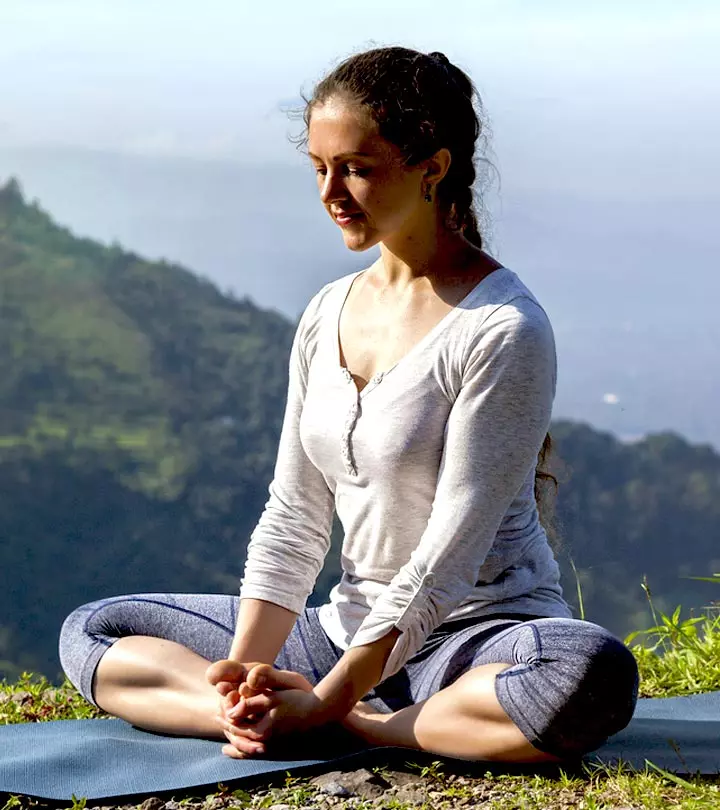
Image: i Stock
Yoga has a mystical allure to it, and knowing about its numerous advantages and watching incredibly flexible yogis effortlessly perform asanas might be quite intriguing. However, you may believe that those tough poses are unattainable and that yoga is not for you. This article will alter that opinion by explaining the basic yoga asanas for beginners.
The basic yoga poses are simple and suitable for everybody, regardless of age or fitness. If you read on, you will see how simple it is to get started with yoga. Yoga is a fantastic practice that goes much beyond a typical workout. It affects the mind, body, and spirit. It is not merely a series of difficult limb-twisting positions. Yoga becomes something wonderful when you blend your breath with movement. It improves your physical and mental well-being. After a while, you will realize that yoga is simple. It makes no difference whether you are adaptable or not.
A cross-sectional online survey conducted on 2434 yoga practitioners found that about 47% of participants reported changing their motivations for practicing yoga from general wellness and fitness to stress management and spirituality. It was further noted that 16% of participants reported starting yoga to manage a physical or mental health condition.
Yoga is for everyone, whether 5 or 80 years old, fit, or obese. You must let go of your fears, dispel all your misconceptions, and embrace the practice. Yoga will bring you nothing but calmness and joy on your trip. It will assist you in easing into the exercise and releasing any stiffness you may have. Keep reading to know more.
 Trivia
TriviaIn This Article
13 Easy Yoga Poses For Beginners
1. Tadasana

Also Known As – Mountain Pose
Benefits – The Tadasana is the mother of all the asanas. Most standing asanas spring from the Tadasana. The very first thing this asana will do is correct your posture. It will strengthen your legs and tone your hips and stomach. It increases the agility of your spine. When you take the right stance, everything else falls in place.
Himanshi Parmar, a blogger, shared her experience with tadasana and how it helped her in her blog. She wrote, “Every time I was commanded into tadasana my mind would say “ah, finally, one asana in which I can relax” and I would stand sloppily and let my mind wander away to glory until the next command for the more “interesting or cool” asana was given (i).”
How To Do It – Stand erect, and place your feet slightly apart. Let your hands hang from your shoulders, alongside your body. Firm the muscles in the thighs, but make sure you do not harden the lower part of the abdomen. Strengthen the inner arches of the ankles, and feel the energy pass from your feet to your head. Turn your gaze upwards, and breathe. Feel the stretch in your body as you hold the pose for a few seconds. Release.
Precautions – Avoid this pose if you have vertigo or feel dizzy, as it might increase your risk of losing balance and falling. Also, maintain even weight distribution across both feet and avoid slouching your shoulders to prevent strain on your back and neck.
To know more about this asana, click here: Tadasana
2. Uttanasana
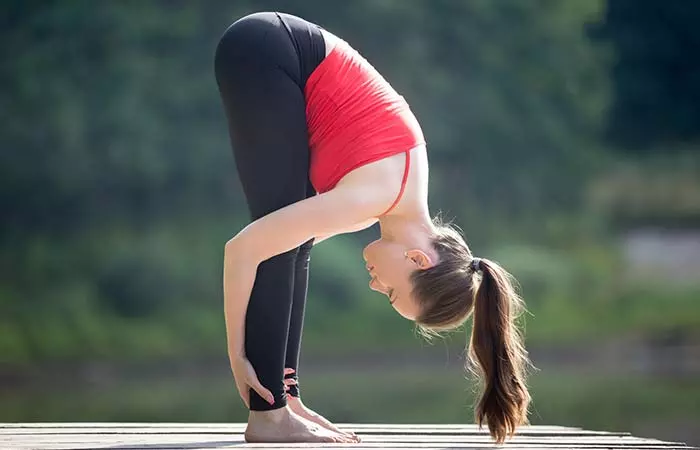
Also Known As – Padahastasana, Hasta Padasana, Standing Forward Bend
Benefits – Uttanasana, when translated in English, is called the most powerful stretch. This asana improves blood circulation and allows a fresh bath of blood that is filled with nutrients and oxygen to rush to your head. When this happens, you feel instantly rejuvenated. This asana stimulates the kidneys, liver, and digestive system. It also gives your back a good stretch. It calms your mind and relieves headaches and insomnia.
How To Do It – Stand in the Tadasana, and take a long deep breath. Bend as you exhale. Fold your body at the waist. Place your hands on the floor beside your feet that are parallel to each other. Push your torso forward as you extend the stretch and lift the tailbone. Hold for a few seconds and release.
Precautions – Avoid this pose if you have severe back issues. Also, come up slowly while returning to the starting position to avoid dizziness, especially if you have low blood pressure. Moreover, pregnant women and people with abdominal surgeries should prevent doing this pose.
To know more about this asana, click here: Uttanasana
3. Virabhadrasana I
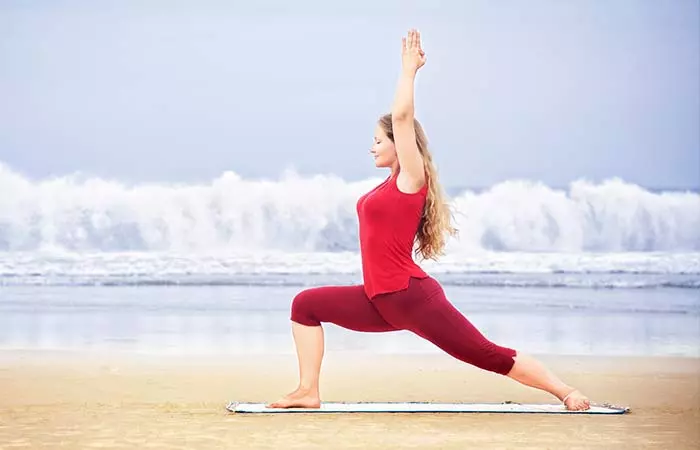
Also Known As – Warrior Pose I
Benefits – This asana allows you to explore your upper body. It helps open up your chest. It also works intensely on your back and legs, thereby stretching and strengthening them. It is an excellent asana for those who have desk jobs because not only does it restore the health of the spine, but it also stimulates the metabolism. This yoga pose for relaxation soothes the mind and body and also helps you focus.
How To Do It – Place your feet hip-width apart. Now, pivot on your left foot, and allow your right foot to face forward. Ensure that the arch of the left foot is in the same line as the right foot. Lower the pelvis as you assume a lunge. Lift your arms above your head and look forward. You could pulse and then hold the pose. Maintain your balance and integrity while you hold this graceful pose. Release and repeat with the left foot forward.
Precautions – Avoid doing this pose if you have knee injuries. Also, keep your front knee aligned over the ankle to prevent strain.
4. Adho Mukha Svanasana
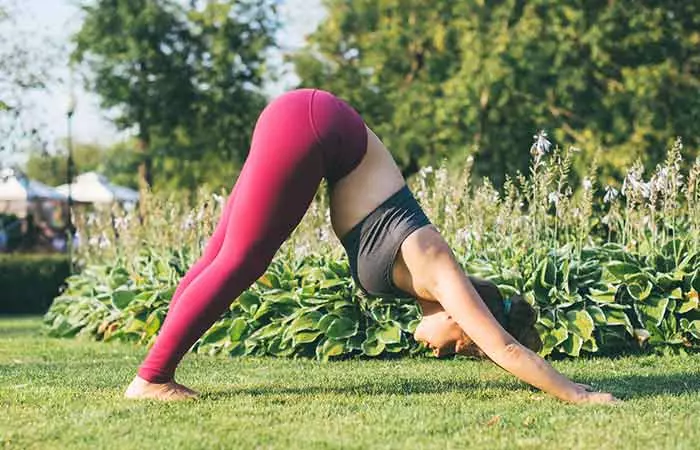
Also Known As – Downward Facing Dog
Benefits – At the outset, this asana is great for your spine. It elongates the spine and removes all the stress and tension that is trapped in the spine. It also gives the hamstringsi A trio of muscles that extend from the hip to just below the knee along the back of the thigh. a good stretch and helps strengthen the legs. This eliminates a whole lot of burden from the back. Blood circulation is improved, and so is digestion. You are left energized and rejuvenated after this asana.
How To Do It – Come onto your fours. Now, lift your knees off the floor, and straighten them. Place your feet flat on the ground. This might be challenging for a beginner. No matter how your feet are placed, ensure that you are comfortable and not in pain. Take two steps backward and move your hands forward so as to create an inverted ‘V’ with your body. Your hips should be higher than your heart, and your head lower. Let your head hang as you hold the pose for a few seconds. Release.
Precautions – Avoid this pose if you have knee or wrist injuries. Also, bend your knees slightly to avoid straining the lower back.
To know more about this asana, click here: Adho Mukha Svanasana
5. Vrikshasana
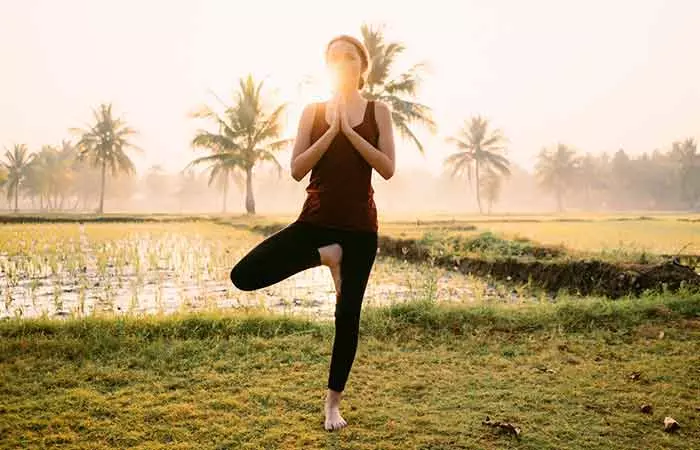
Also Known As – Tree Pose
Benefits – The Vrikshasana is a great balancing pose. It helps you improve your ability to focus and concentrate. This asana strengthens the spine and the legs. It also aids neuromuscular coordination. Through this asana, you can improve your seeing and hearing abilities. It helps deepen the thorax too.
How To Do It – Stand in the Tadasana. Slowly lift your right foot off the floor, and hug your right knee. Once you gain some balance, open up your right hip by turning your folded knee out. Place your right foot against the left thigh and hold the pose. As a beginner, you can use the wall for support. Eventually, you can fold your hands at the center of your chest. Also, remember to set your gaze on a distant object to help you focus and balance better. Once you release, repeat the asana with your left foot raised.
Precautions – Do not place your lifted feet on the knee joint to avoid strain. Also, avoid the pose if you have inner body balance issues.
To know more about this asana, click here: Vrikshasana
6. Bhujangasana
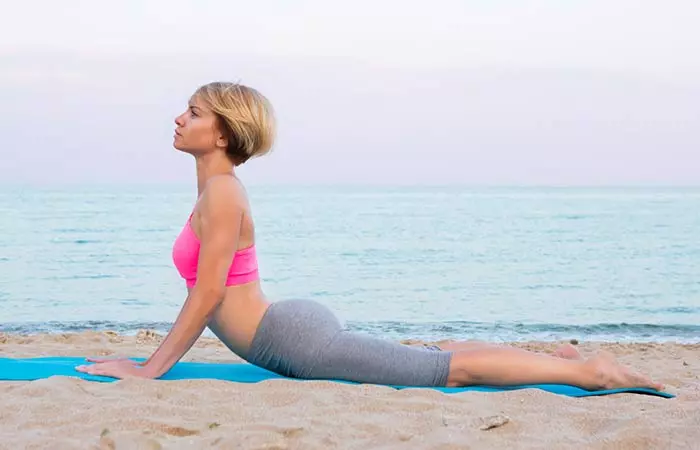
Also Known As – Cobra Pose
Benefits – This asana has countless benefits. Of course, it works on your back, but it also stimulates your digestive, reproductive, and urinary systems, helping them to work better. Practicing this asana regularly helps open up your chest and throat. The Bhujangasana helps regulate your metabolism too.
How To Do It – Lie down with your stomach facing the ground, ensuring that your legs are stretched out. Place your elbows by your side. Slowly lift your chest, and place the body weight on the elbows. Take a long deep breath, and release.
Precautions – Avoid doing this pose if you have severe lower back pain or spinal injuries. You should also avoid it if you are pregnant or have a weak core.
7. Marjariasana
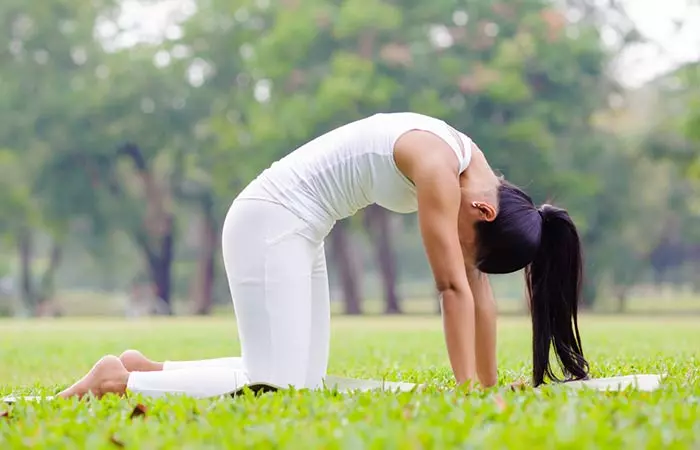
Also Known As – Cat Pose
Benefits – This asana adds flexibility to the spine and enhances the circulation of blood and spinal fluids. It calms your mind and relaxes your body. This asana is also a great abdomen toner as it slowly burns the pockets of fat. It helps in complete body detox.
How To Do It – Ideally, this asana is done in combination with the Bitilasana and together, the asanas are called the Cat-Cow. To do the Marjariasana, you must come onto your fours. Then, inhale and lift your spine as you round it, making it concave. Bring your chin to your chest. Exhale and lift your chin to look up as your back goes into a convex position. This is the Bitilasana. Repeat these two asanas alternatively, coordinated with your breath. The asanas must be done at least five times each for best results.
Precautions – Keep your movements slow and smooth to avoid jerking the spine. Avoid the pose if you have wrist pain or injuries.
8. Balasana
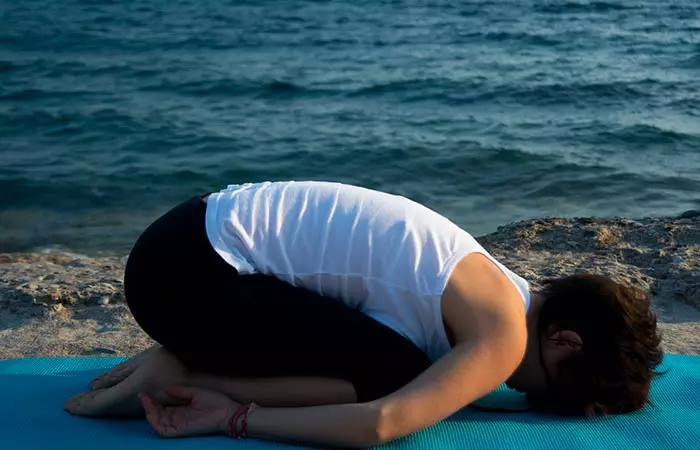
Also Known As – Child’s Pose
Benefits – This asana is a relaxing pose. It is meant to help in back relaxation and calm the mind. It also massages and flexes the internal organs, thereby stimulating them. It releases trapped stress in the muscles and improves blood circulation. This asana is especially helpful to beginners. If you feel dizzy or fatigued during the practice, breaking into this asana will ease you instantly.
How To Do It – Come on to all fours. Bring your feet together, and widen your knees. Rest the abdomen on your thighs, and place your buttocks on your feet. Your forehead must touch the ground. Stretch out your arms. You can also place them next to you, alongside your legs, with the palms facing upwards.
Precautions – People with severe knee injuries should avoid this pose. Even if you do not have any knee issues, placing a cushion under your knees is recommended to prevent discomfort.
To know more about this asana, click here: Balasana
9. Setu Bandhasana

Also Known As – Bridge Pose
Benefits –This asana works on straightening and strengthening the back. It also helps to open up the chest and reduce thyroid problems. It is an excellent asana for women as it strengthens their reproductive system. It also aids digestion. This asana works wonders for those suffering from insomnia, anxiety, and high blood pressure. The Setu Bandhasana calms the brain and relaxes the body.
How To Do It – Lie flat on your back, and bend your legs at the knees. Lift your hips and back off the floor. Be gentle. Now, straighten your shoulders and stretch out your arms as they rest on the floor such that they reach your feet. Take a few deep breaths as you hold the pose for a few seconds, and release.
Precautions – Avoid this pose if you have knee or neck injuries. You should also avoid pushing your hips too high during the pose to prevent strain on the lower back.
To know more about this asana, click here: Setu Bandhasana
10. Baddha Konasana
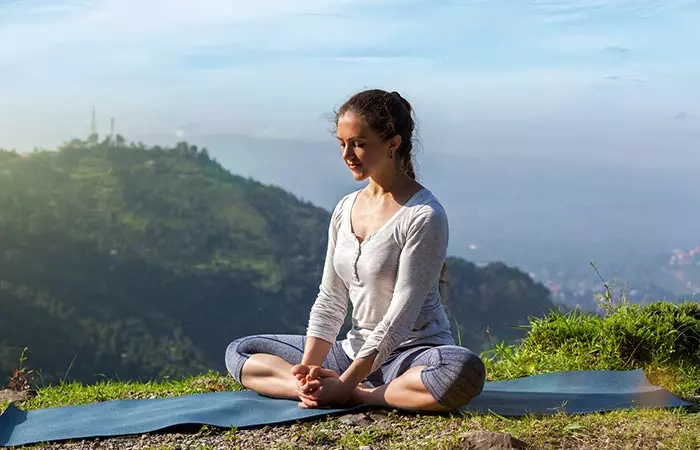
Also Known As – Cobbler Pose, Butterfly Pose, Bound Angle Pose
Benefits – This is another amazing asana for women to practice. It improves the health of their reproductive system and reduces the symptoms of menopausei The time in a woman's life when her menstrual cycle stops. This is usually between the ages of 45 and 50. and menstruation. Practicing this asana also ensures ease of delivery (childbirth). It also works on the kidneys and digestive system. With regular practice, sciatica is relieved. This asana also improves blood circulation and calms the mind. It is a great hip opener. When paired with meditation, it helps enhance mindfulness and strength.
How To Do It – Sit on the mat with your legs stretched out. Fold your knees, and join your feet at the center. Straighten your back as you make yourself comfortable. Hold your feet with your palms. Now, push your knees down to the ground, as much as you possibly can. Hold the pose for a few seconds and release.
Precautions – Avoid this pose if you have back, groin, or knee injuries. Also, do not lift your hips too high to prevent unnecessary strain and imbalance.
To know more about this asana, click here: Baddha Konasana
11. Supta Matsyendrasana
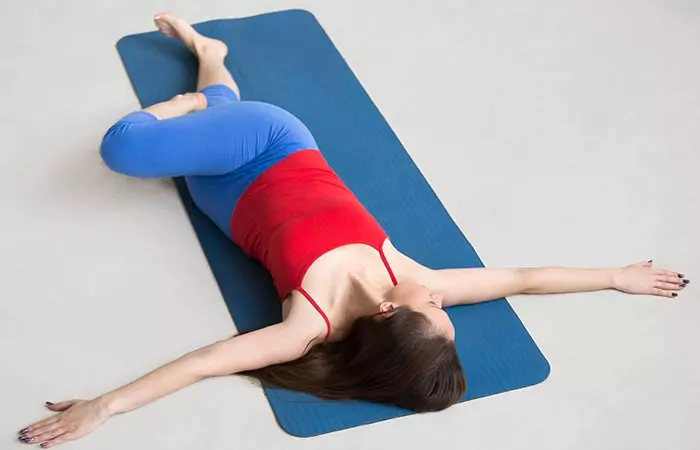
Also Known As – Supine Twist, Reclining Lord Of The Fish Pose, Jathara Parivartanasana
Benefits – Twists make for amazing detoxes. This asana relieves sluggish digestion, stifled breathing, and aches and pains. It leaves you with a sense of revived energy. Your internal organs are toned, and your lower body gets a good stretch. Frazzled nerves are eased and relieved.
How To Do It – Lie down on your mat, with the back on the ground. Stretch out your arms on either side of your body. Now, lift and fold your right knee. Twist your hip and place it across the left side of your body. Turn your gaze to the right and hold the pose. Release. Repeat the asana with the left leg.
Precautions – To prevent injuries and strain, avoid forcing the knees down. This pose is also best avoided if you have hip or back issues.
To know more about this asana, click here: Supta Matsyendrasana
12. Shavasana
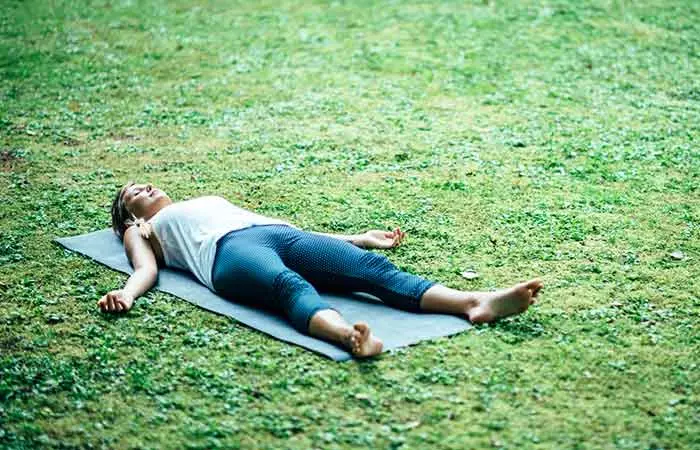
Also Known As – Corpse Pose
Benefits – This asana completely relaxes the body and allows it to reap the benefits of the workout. It gives you a boost of energy and also allows you to concentrate better. This asana is perfect to relieve stress and tensions. You can practice it every time you are stressed or feel low on energy.
How To Do It – Lie flat on your back, with your palms resting beside you and facing upwards. Make yourself comfortable and ensure that your body is in a straight line. Close your eyes and concentrate on every part of your body. Do not let go of your breathing. Be fully aware of each sensation in your body. Stay present in the moment. Stay in this asana for a few minutes, and then bat your eyelids open as you prepare your mind and body for the rest of the day.
Precautions – Always perform this pose on a hard, flat surface. Avoid distractions or moving your body during it.
To know more about this asana, click here: Shavasana
13. Malasana
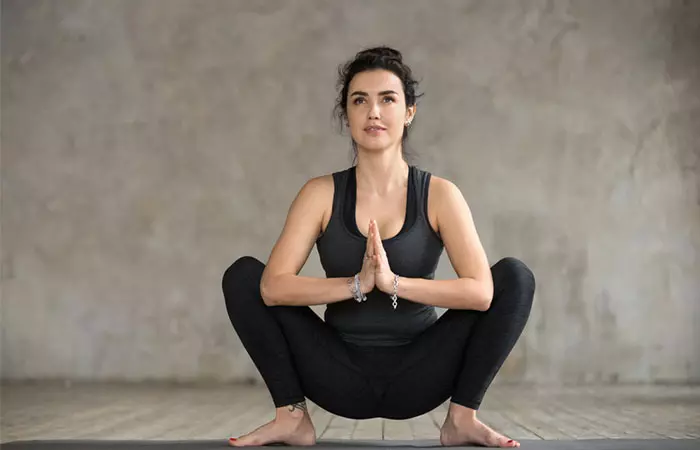
Also Known As – Garland Pose
Benefits – The garland pose improves relaxation, well-being, and productivity. It also promotes hormonal balance, and increases blood flow to the pelvic region by stretching the stomach and the lower portion of the body.
How To Do It – Stand on the mat with your feet slightly wider than your hips. Bend your knees and squat low. Bring your upper arms inside your knees. Bend your elbows to bring your palms together in a prayer position. Gently press your elbows toward your inner thighs and bring your hips closer to the ground. Maintain a straight spine throughout the exercise. Stay in this pose for a few minutes and, slowly, return to the original position.
Precautions – Avoid this pose if you have knee issues. Also, avoid pushing yourself into a deeper squat if your body cannot handle it.
 Did You Know?
Did You Know?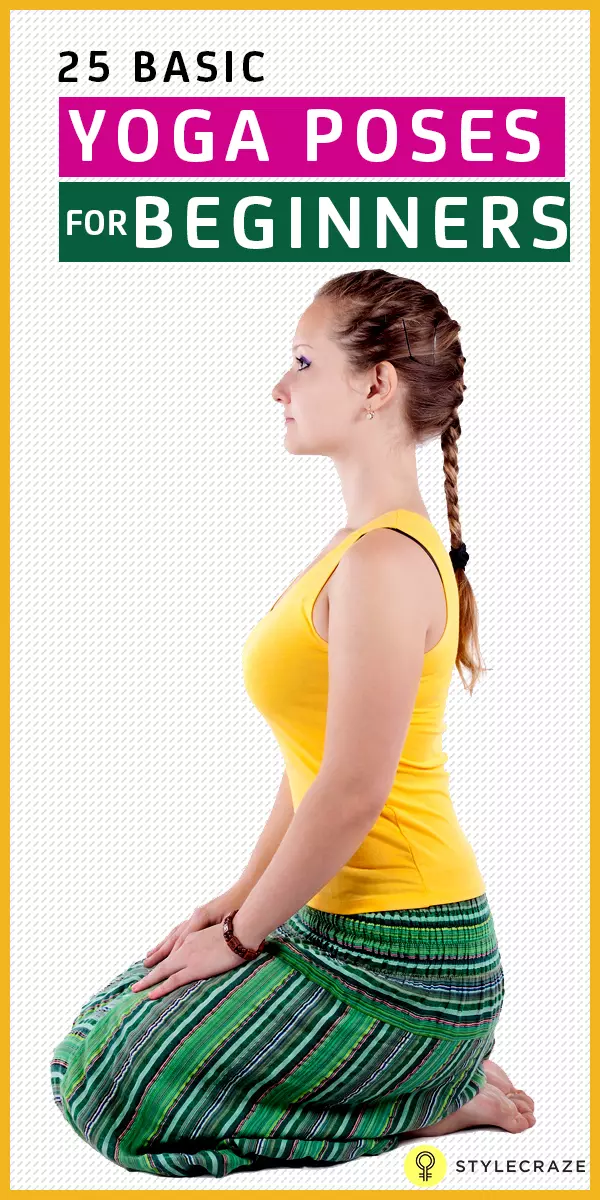
To know more about this asana, click here: Shavasana
Key Takeaways
- Basic yoga asanas are suitable for everybody, especially beginners to start practicing yoga and become acquainted with its principles and postures.
- Yoga may improve your physical and mental health.
- The mountain pose, the child’s pose, and the corpse pose are some of the common yoga poses for beginners.
- These asanas may help improve blood circulation, restore the health of the spine, and improve metabolism.
Infographic: Why Should You Practice Yoga?
The benefits of yoga range from better physical and mental health to greater spiritual well-being. If you are a beginner and looking for some motivation, a brief glance at yoga’s long list of benefits may help you. The following infographic lists the same and discusses yoga’s rising popularity in the western world. Take a peek. Illustration: StyleCraze Design Team
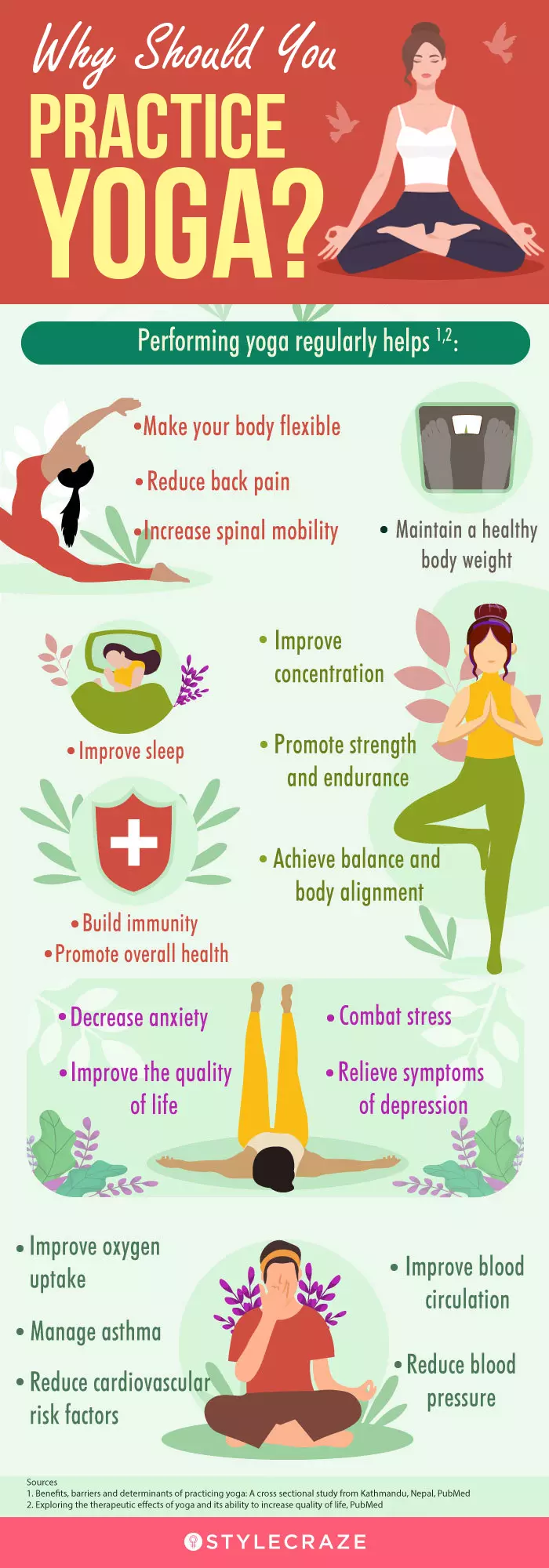
The basic yoga asanas for beginners are easy to learn and can be done by anyone, regardless of age or fitness level. Yoga is far more than just a workout. It has an impact on one’s mind, body, and spirit. It is not just a sequence of challenging limb-twisting poses. When you combine your breath with movement, yoga transforms into something magical. It benefits both your physical and emotional health. After a while, you will notice that yoga is quite simple. Try the following asanas mentioned in our article and enjoy their benefits.
Frequently Asked Questions
What is the best time to practice yoga?
Generally, it is recommended to practice yoga in the morning or early evening. However, you may choose the best time for you and your routine.
How often should I practice yoga as a beginner?
If you are a beginner, you may practice yoga 2-3 times a week. This will give you time to learn the basics, like proper breathing and alignment. Your body will also adjust better to the poses and movements during this time.
Can you lose weight with yoga?
Yes. Yoga may promote moderate weight loss (1). However, for effective weight loss, you must focus on maintaining a healthy lifestyle and consuming a balanced diet.
Which yoga is best for the morning?
The best morning yoga may include Surya Namaskar (Sun Salutations), Tadasana (Palm Tree Pose), Kati Chakrasana (Waist Twisting Pose), Utkatasana (Chair Pose), and Parivrtta Utkatasana (Revolved Chair Pose), Natarajasana (King Dancers Pose), etc. These yogas may promote detoxification and energize your body.
How many times should a yoga pose be done?
There isn’t any set number of times you should do a yoga pose. It depends on how much an individual can pick up.
What is the difference between exercise and yoga?
Exercising focuses more on physical activity and fitness, while yoga encompasses physical, mental, and spiritual wellness.
Illustration: Basic Yoga Asanas For Beginners To Ease Into The Routine
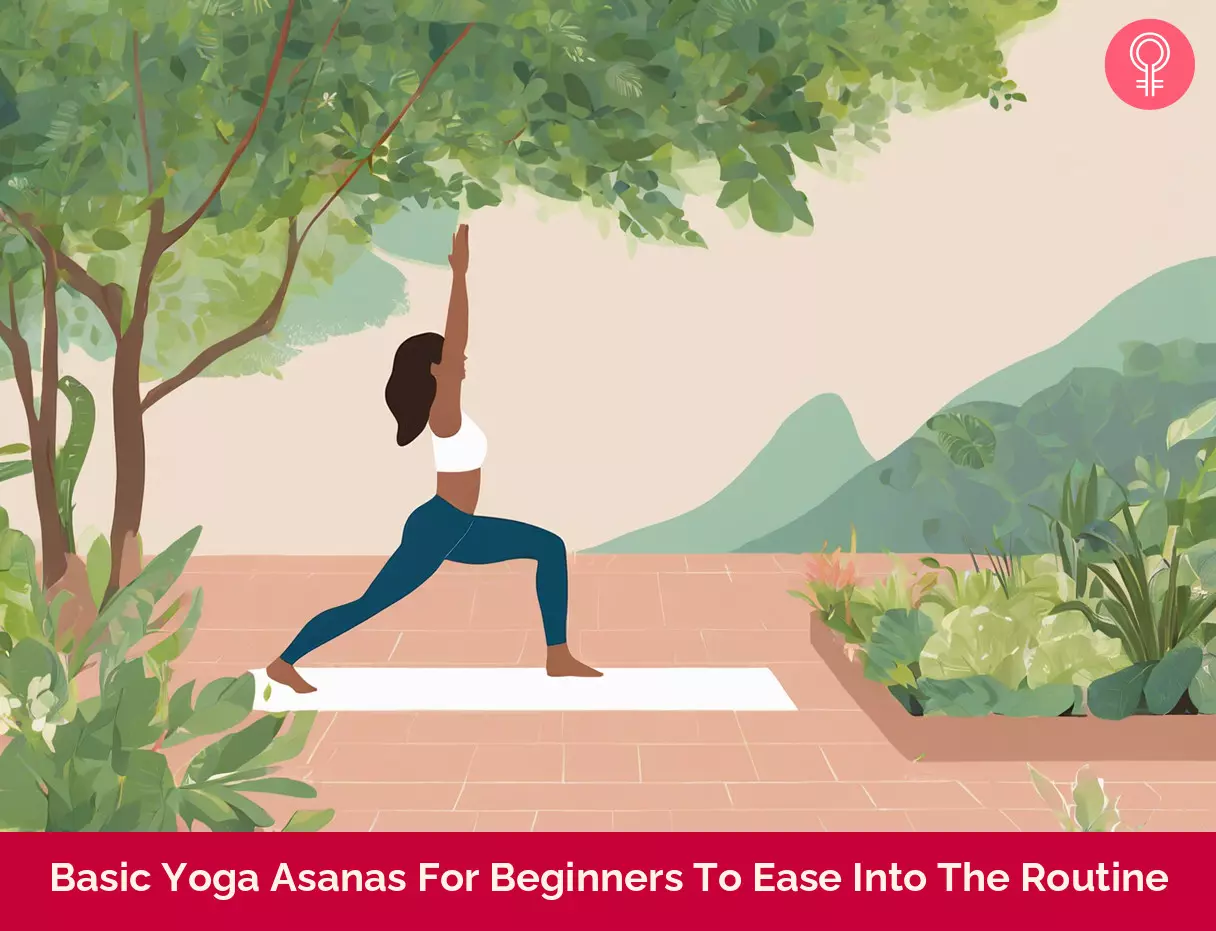
Image: Stable Diffusion/StyleCraze Design Team
Start your journey to better health with this beginner’s yoga at-home video. Learn about the basic yoga asanas to improve your physical and mental well-being.
Personal Experience: Source
StyleCraze's articles are interwoven with authentic personal narratives that provide depth and resonance to our content. Below are the sources of the personal accounts referenced in this article.
i. Tadasana;https://medium.com/@himanshi.parmar25/tadasana-69f3ad389344
References
Articles on StyleCraze are backed by verified information from peer-reviewed and academic research papers, reputed organizations, research institutions, and medical associations to ensure accuracy and relevance. Read our editorial policy to learn more.
- Effects of Yoga on Mental and Physical Health: A Short Summary of Reviews
https://dash.harvard.edu/bitstream/handle/1/10436227/3447533.pdf
Read full bio of Sri Yogi Anand
Read full bio of Shirin Mehdi
Read full bio of Arshiya Syeda
Read full bio of Moksha Gandhi







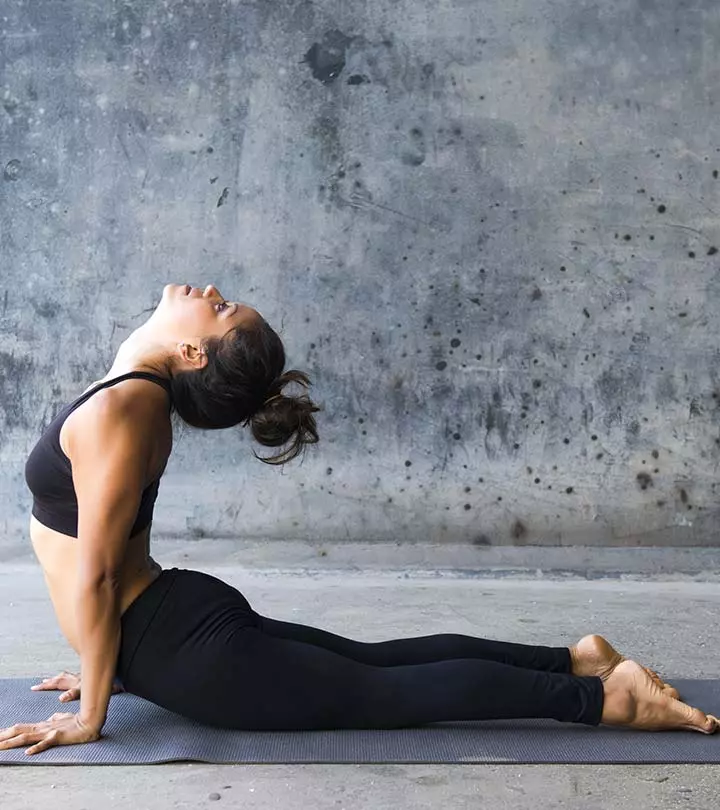
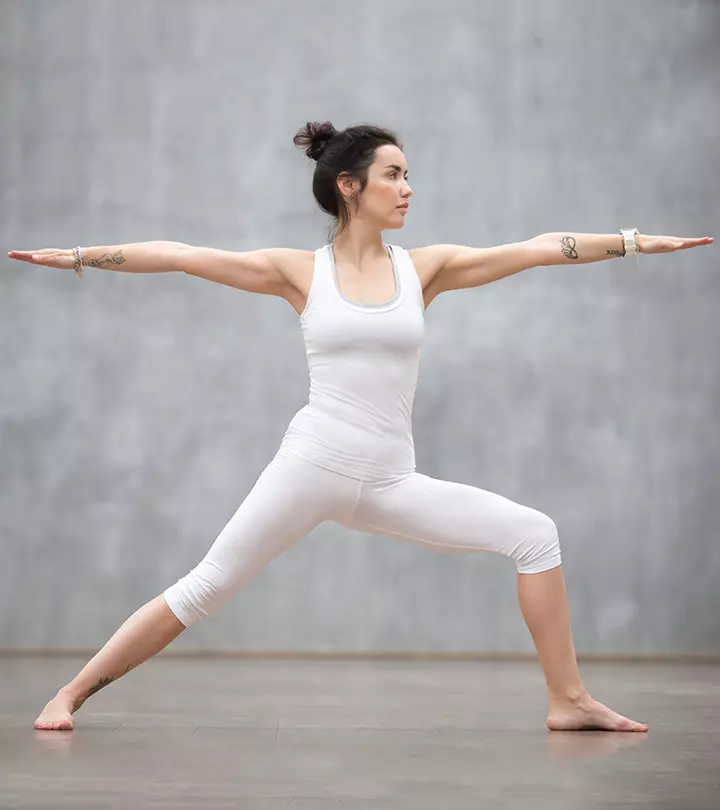

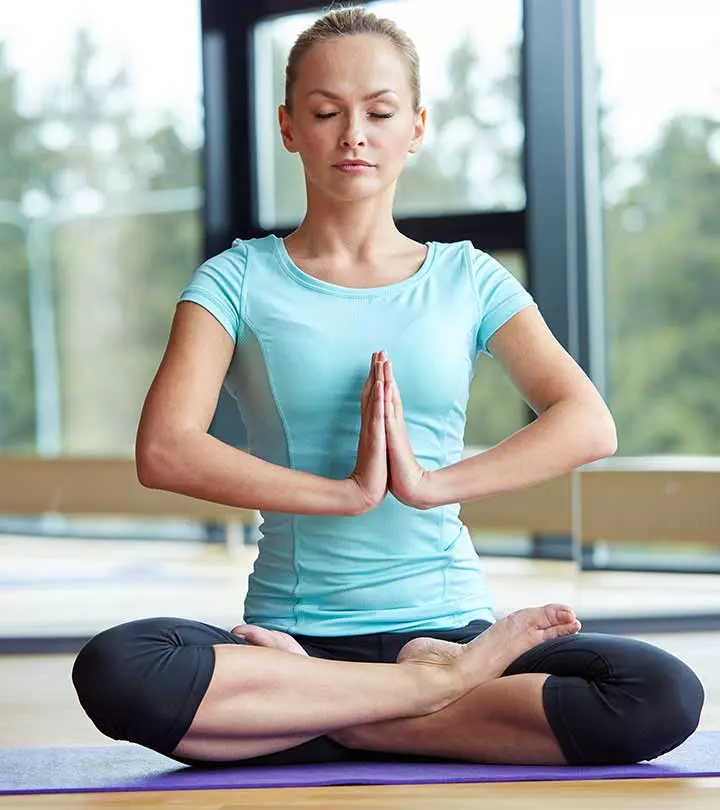
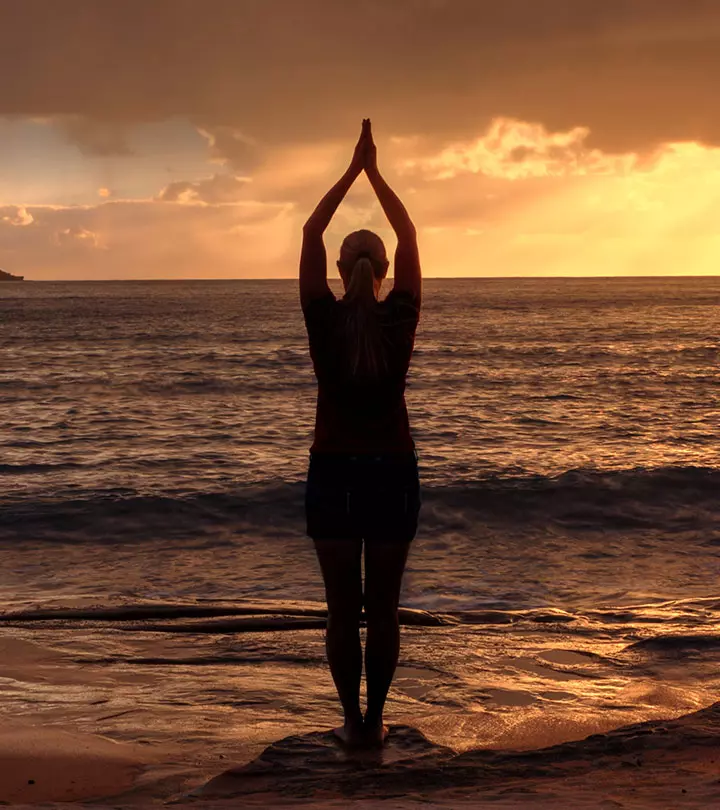


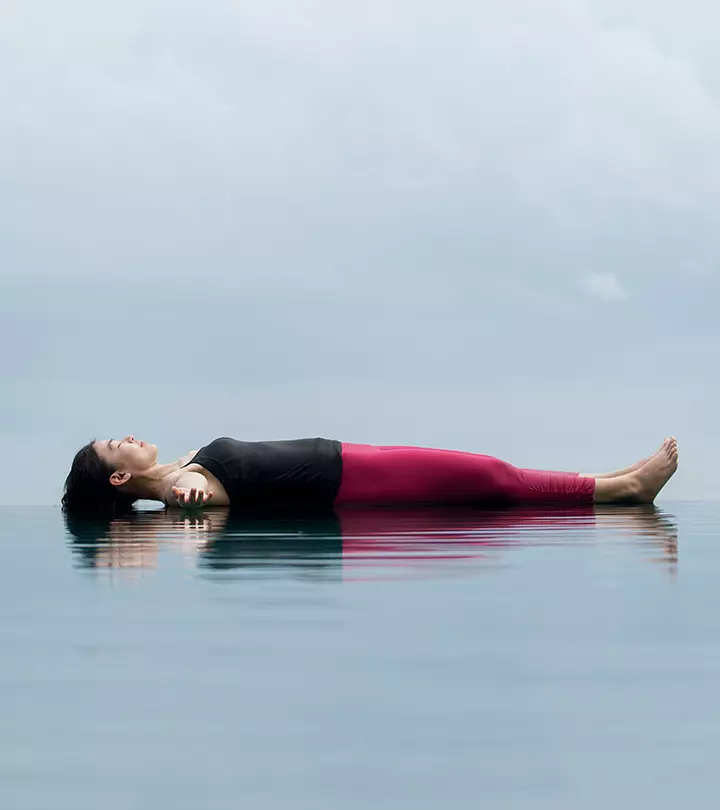
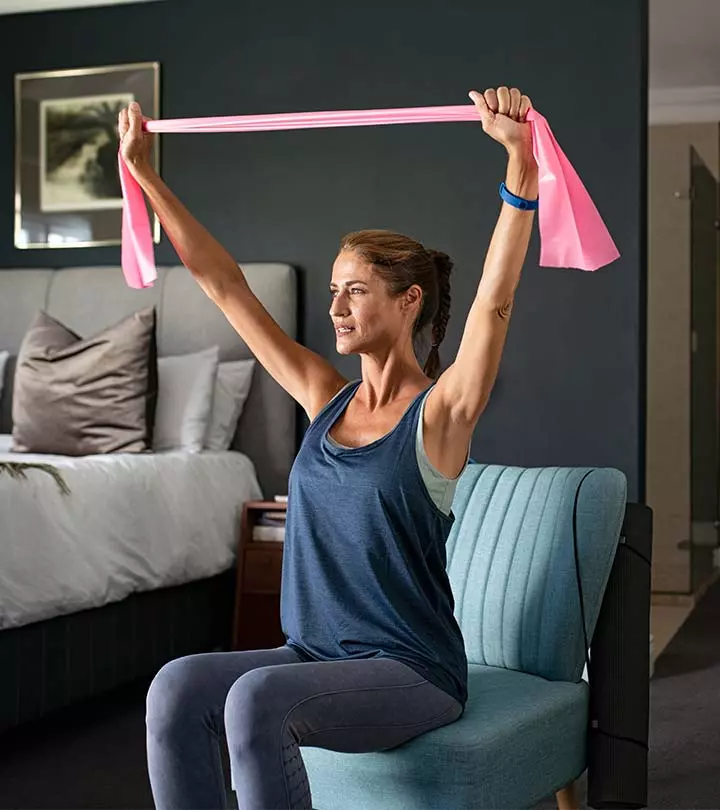
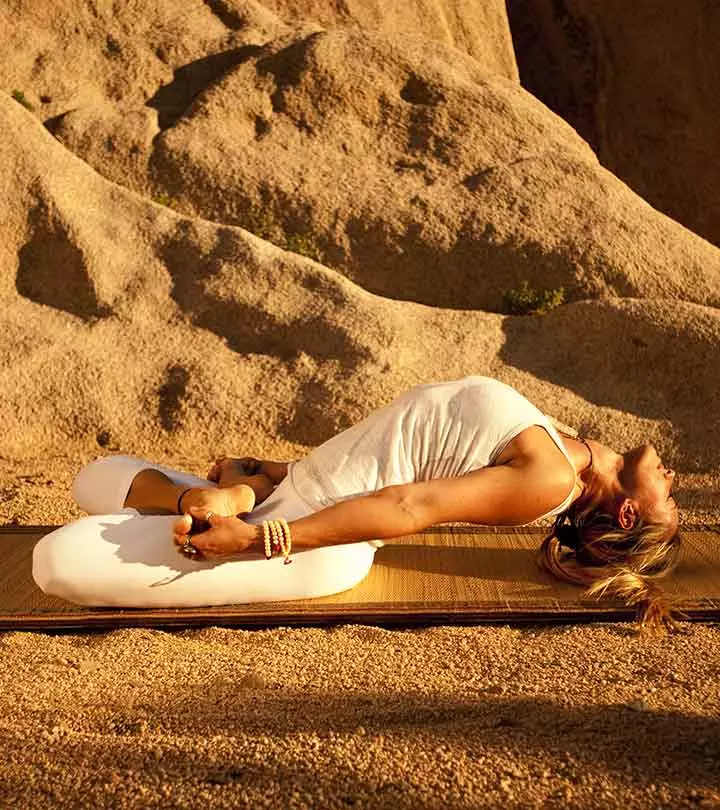

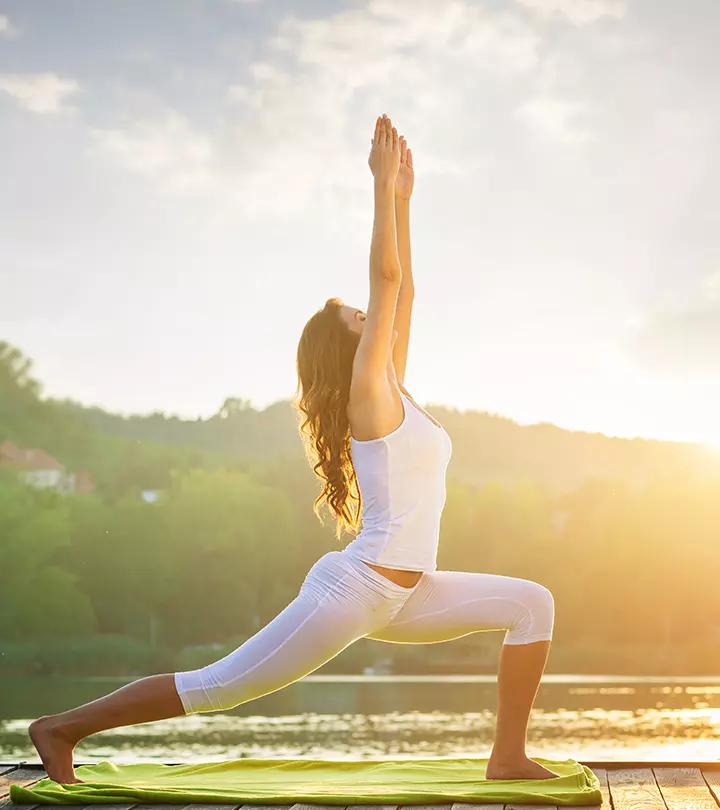
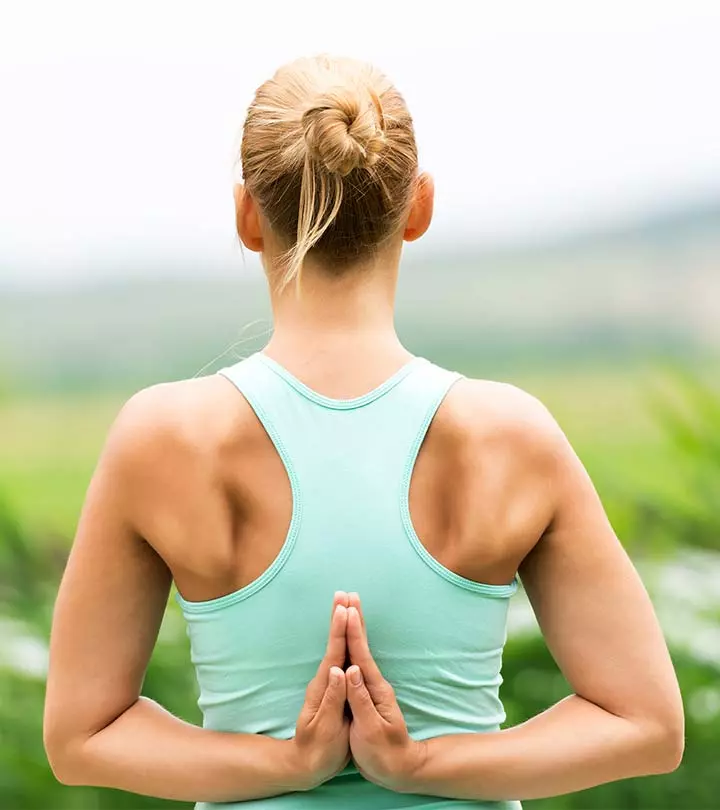
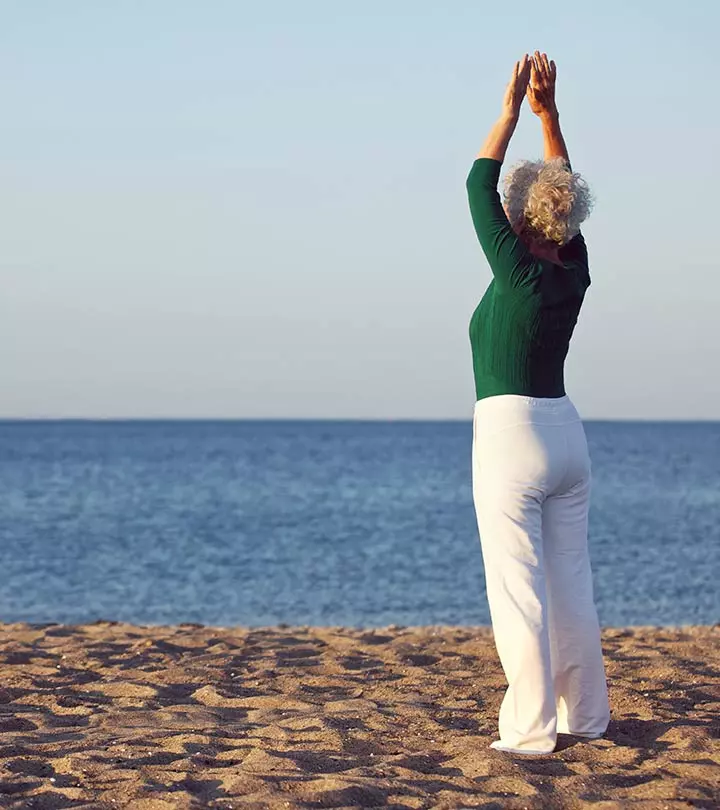
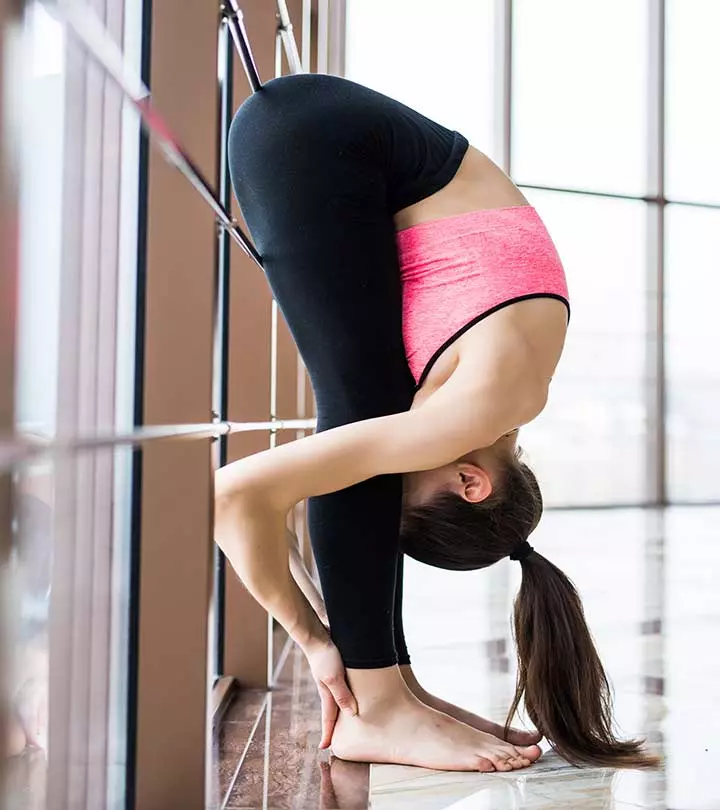
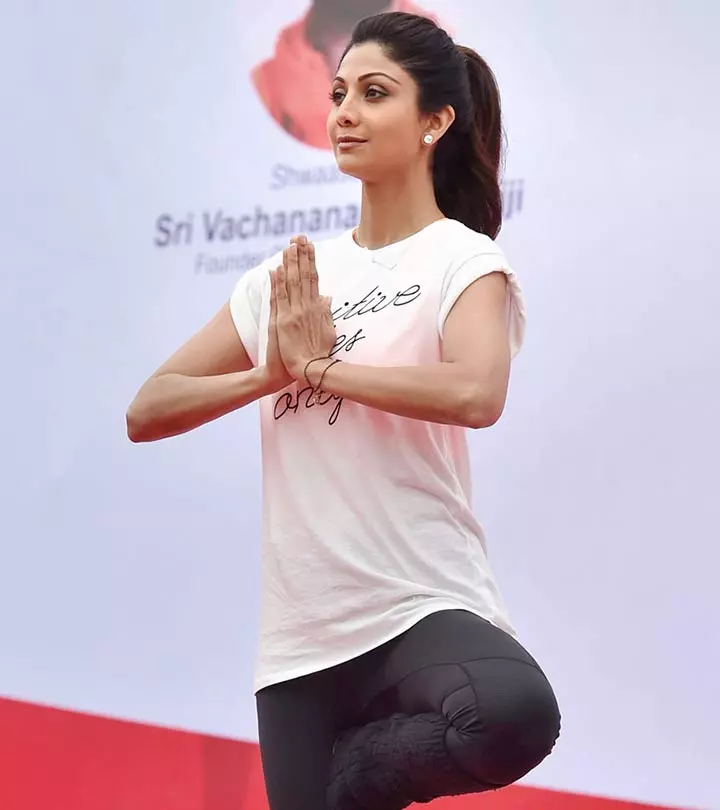


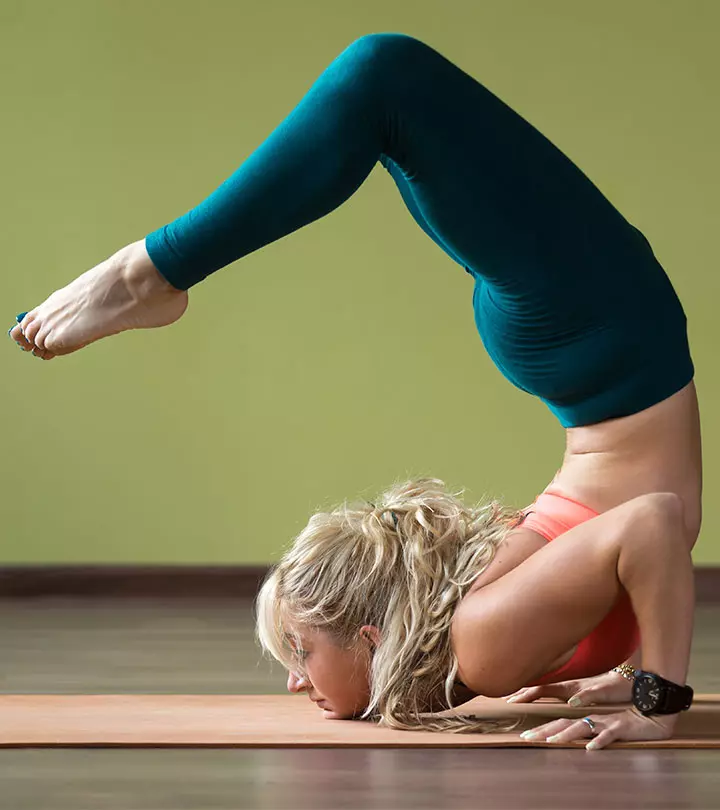
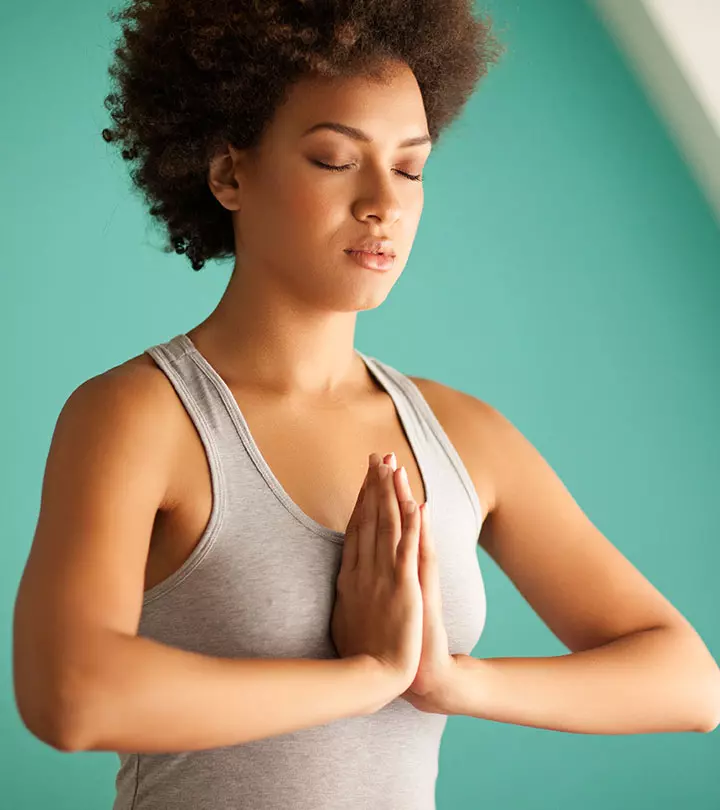
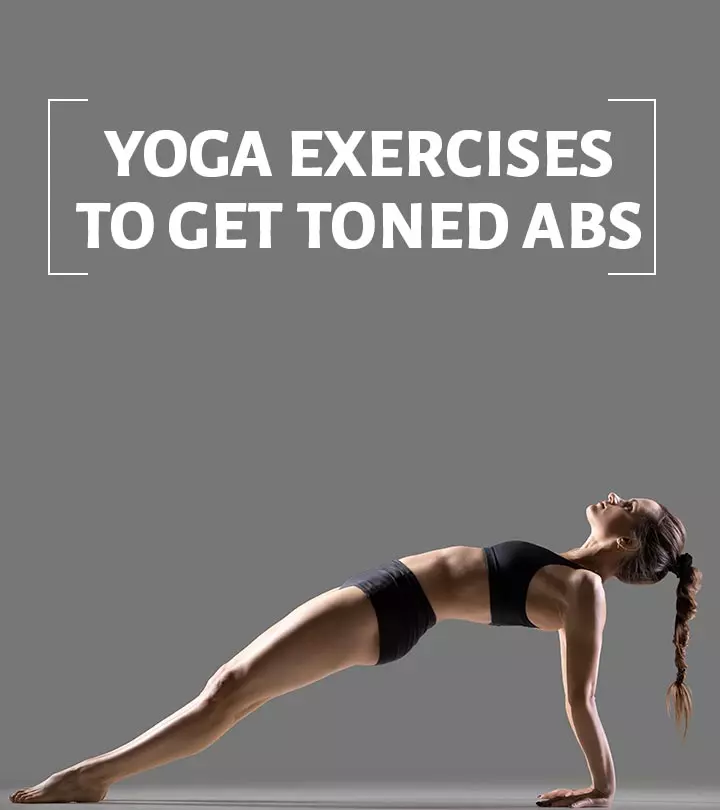
Community Experiences
Join the conversation and become a part of our empowering community! Share your stories, experiences, and insights to connect with other beauty, lifestyle, and health enthusiasts.